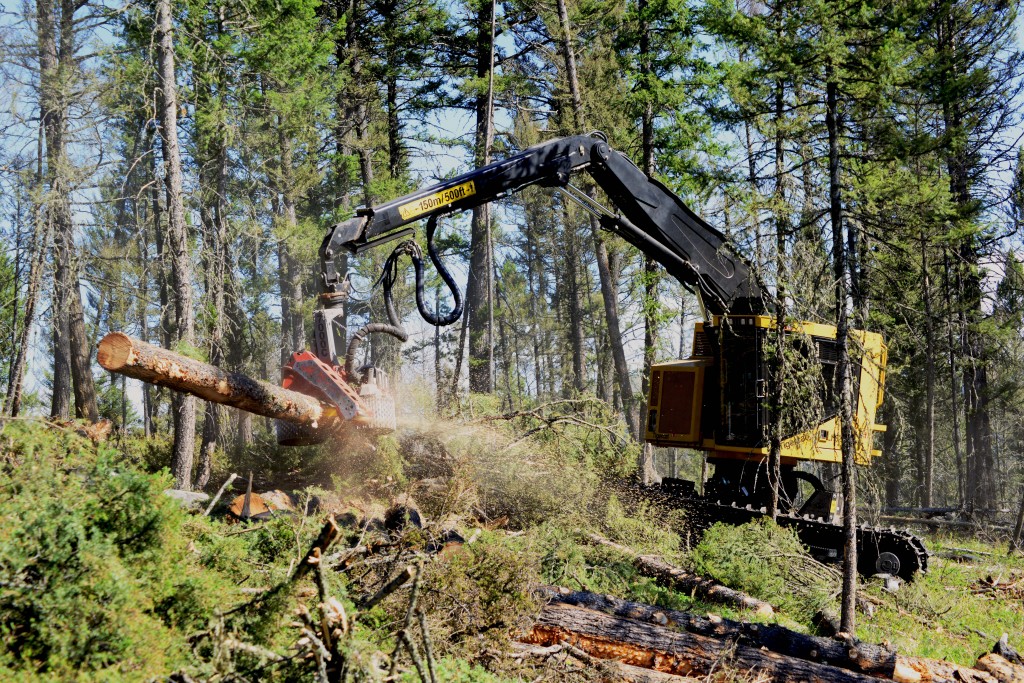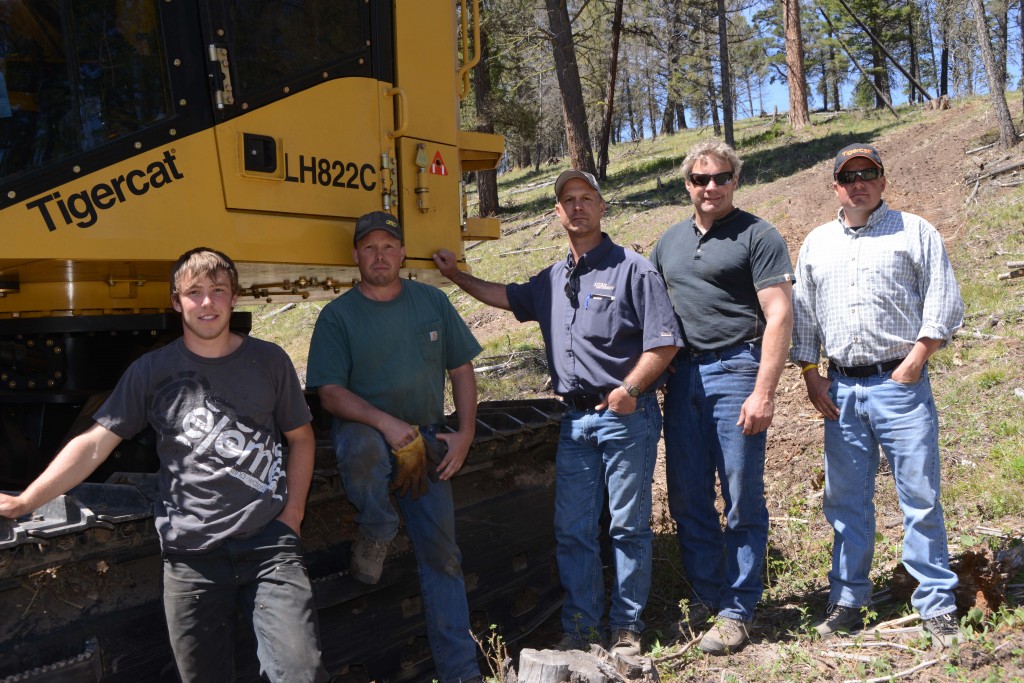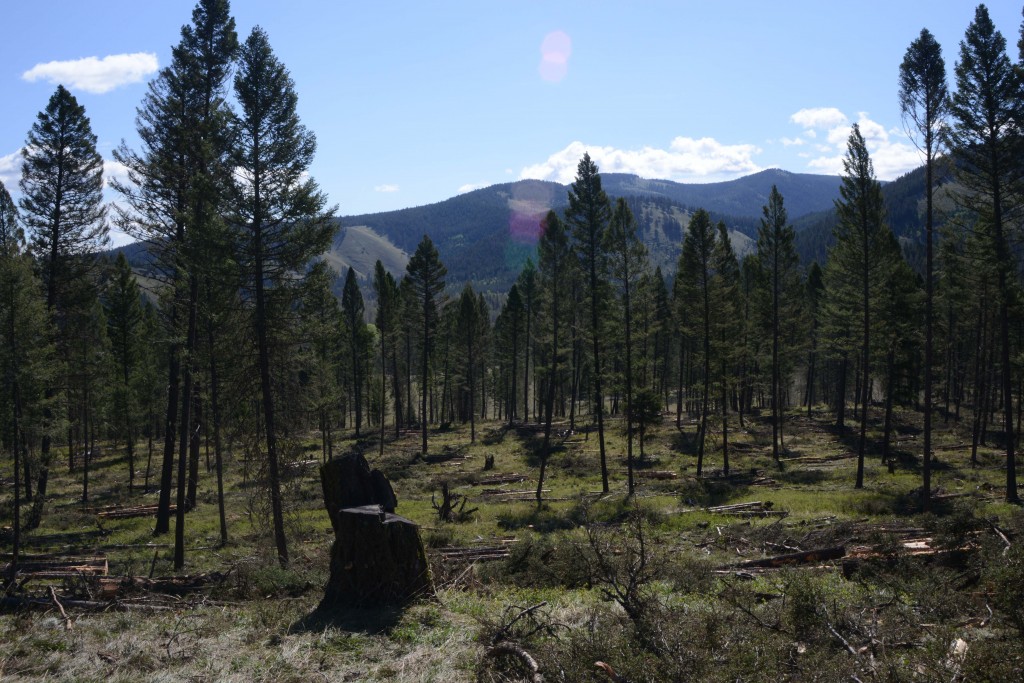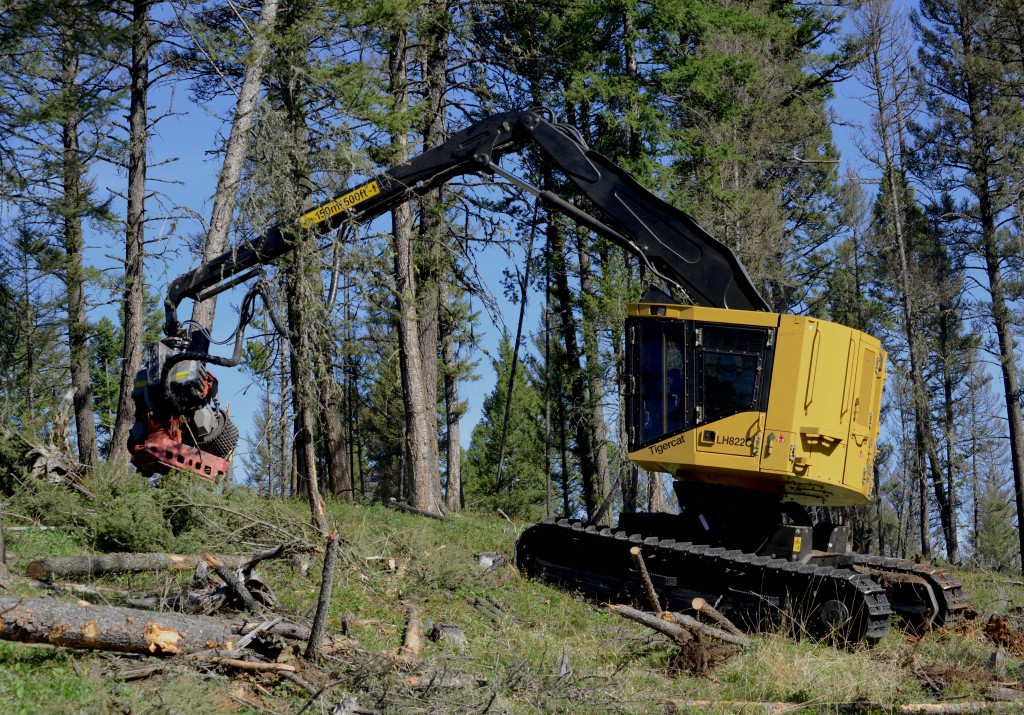1st July 2013
Tigercat and Titan Machinery opening new markets in Montana.
— Paul Iarocci
The Montana forest industry has had its share of challenges in recent years. A combination of drought conditions lasting several years, warmer winter temperatures and a predominance of 80 plus year old lodgepole and ponderosa pine—especially on federal owned land—has led to a mountain pine beetle outbreak. Meanwhile the western spruce budworm feeds on commercial species like fir, spruce, and larch. Ongoing debate and polarized viewpoints among various stakeholders surround the issues of wildfire, fuel loads and commercial logging. The annual harvest in Montana is in steady decline—less than one million cubic metres in 2011 is close to half of the annual harvest in say, 2004.

Operator, Levi Cahoon, likes the stability, boom and power of the LH822C.
That said, the harvesting professionals in the state are a resilient and determined bunch and continue to invest in equipment that will suit the unique requirements of the region. Titan Machinery is a large agricultural, construction and forestry equipment dealer, based out of Fargo, North Dakota, with over 100 locations in North America. Included are key forestry regions Colorado, Montana, Wisconsin and Minnesota.
Tigercat was already present in Montana, having established a relationship with Rick Smith, owner of Smith Logging Inc in 1998 when Rick purchased a 5000 series saw for a Timberjack 2618 feller buncher. Later, in 2008, Rick purchased an LX822C feller buncher fitted with a 5702 saw which has now passed the 10,000 hour mark.
The small but significant equipment market has historically been dominated by zero tail-swing track carriers and a smattering of rubber tire CTL systems. Titan has recognized that Tigercat’s high performance zero tail-swing carriers, primarily the LX830C feller buncher and LH822C harvester, could be a great fit for the region’s full-tree and CTL thinning applications.

(L-R) Levi and Leelyn Cahoon with Rick Lewis, Titan salesman in Missoula, Kevin Cotton, Titan forestry specialist and James Farquhar, Tigercat district manager covering Alberta, Saskatchewan, Manitoba, Montana and Colorado. Bull Creek Forestry, a family business owned by Leelyn and Teresa Cahoon, recently pulled the trigger on a new LH822C harvester equipped for thinning with an 11 m (36 ft) telescopic boom and a Logmax 7000C head. Leelyn’s son, Levi is the harvester operator. The track harvester replaced a wheel harvester and is working alongside a 12-tonne forwarder predominantly in thinning applications.
Bull Creek buys private timber, primarily larch, fir and pine, and markets the products. The saw logs are sold to Pyramid Mountain Lumber and the pulpwood goes to Boise Cascade. Most of the work comes from timber sales and smaller contracts on private ranches.
The day BTB visited the Bull Creek operation, Leelyn and Levi were working a 60 ha (150 ac) stand on a 1 200 ha (3,000 ac) private ranch near Missoula. The lodgepole pine had been previously removed in an earlier thinning and now Levi is targeting the older and weaker fir and larch. The tree size is inconsistent but there is some good sized timber in the stand with the larger trees being one to two tons per stem and over 100 years old. Leelyn estimates they are taking 15-16 tons per acre, so there can be a fair bit of machine travel and track speed is important to Levi. Production in a sparse stand like this is around 120 tons per day in 8.5 working hours. In more normal conditions, production averages 20–27 tons per hour.

Bull Creek works a lot of private timber tracts. The aesthetic of the remaining stand is very important to landowners.
After coming off the wheel harvester there a few adjustments for Levi but in general he prefers the new machine, commenting that, “The swing power is so much better. The boom power and reach is awesome and it has really good stability at reach.” Levi notes that the long reach telescopic boom is essential for their thinning work and compensates to some extent for the slower travel speed of a track based carrier compared with a rubber tire harvester. From an operating perspective, the one big advantage of the LH822C over the wheel harvester is the stability. “The stability is so much better. I feel that I don’t get bounced around as much.”

The 11 m (36 ft) telescopic boom is critical to success for Bull Creek’s typical selective felling applications.
Bull Creek’s LH822C is equipped with swing priority, enhancing the swing speed and performance, when multifunctioning and eliminating any interaction between the boom and swing function.
Levi explains that he spends a lot of time looking up to the treetops in order to identify the inferior or budworm infected trees. “I take the trees that are not green, even at the very top. Upward visibility is important. The wheel harvester did have better upward visibility because of the curved windshield. Looking through the skylight is just something that I will get used to with a track machine. In regular timber sales with marked trees, it doesn’t really matter. I can just sit back and go. But I love the cab. It is comfortable and I like the space behind the seat.”
Leelyn says that after they are finished with the thinning, he will come back with an excavator equipped with a mulching head and grind up all the tops and branches for quicker nutrient breakdown, reduced fi re load and a very nice looking stand for the landowner. There is a very strong focus on aesthetics on these private tracts and ranches.
With the LH822C’s light footprint, Leelyn jokes that the forest service people are asking him to please make more ground disturbance to promote regeneration by scratching up the top layer of organic matter and allowing seeds to get into the top soil. The low ground pressure combined with the long reach telescopic boom go a long way toward the goal of no impact, something that landowners are certain to appreciate.